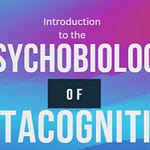Building on our previous exploration of metacognition's role in integrating cognitive activities and behavioral regulation, we now journey back 17,000 years to discover how our ancestors at Lascaux may have pioneered the very learning processes we study today.
The World's First Classroom
Deep in the caves of southwestern France lies what may be humanity's earliest evidence of formal education. The magnificent paintings of Lascaux, discovered in 1940, represent far more than artistic expression. They reveal a sophisticated understanding of how humans learn, remember, and pass knowledge across generations.
When we examine Lascaux through the lens of metacognitive theory, a remarkable picture emerges. These weren't random artistic impulses painted on convenient walls. Instead, they represent a carefully orchestrated learning environment that demonstrates our ancestors' intuitive grasp of how cognition, memory, and behavioral regulation work together.
The Architecture of Ancient Learning
The cave system itself functions as a three-dimensional textbook. The paintings aren't scattered randomly but follow a deliberate sequence that guides learners through increasingly complex concepts. This spatial organization mirrors what we now know about how metacognitive monitoring helps learners track their progress through material.
The famous Hall of Bulls doesn't just display animals, it creates an immersive environment where knowledge about hunting, animal behavior, and survival strategies could be transmitted through multiple sensory channels. The interplay of firelight and painted forms would have created a dynamic, memorable experience that engaged both visual processing and spatial memory.
Metacognitive Strategies in Stone Age Teaching
What's particularly fascinating is how Lascaux demonstrates early understanding of metacognitive principles:
Self-Monitoring Through Storytelling: The sequential nature of the paintings suggests they were used to help learners monitor their understanding as they progressed through hunting scenarios. Each chamber represents a different stage of knowledge acquisition, allowing both teachers and students to assess comprehension.
Strategic Knowledge Integration: The cave paintings integrate multiple cognitive domains such as: visual recognition, spatial reasoning, narrative memory, and practical application. This mirrors how metacognition coordinates different cognitive activities toward behavioral goals.
Error Detection and Correction: Some paintings show evidence of being painted over or modified, suggesting a process of refinement and correction that reflects metacognitive monitoring of the learning process itself.
The Social Brain in Action
Lascaux also reveals how metacognitive learning operates in social contexts. The cave required collaborative effort, not just in painting, but in the teaching process itself. Multiple generations would have gathered in these spaces, with experienced hunters using the visual aids to help novices develop both practical skills and the metacognitive awareness needed to regulate their own learning.
The paintings served as external memory aids that supplemented individual cognitive capacities. This represents an early form of distributed cognition, where the environment itself becomes part of the learning system—a principle we see echoed in modern educational technologies.
From Firelight to Digital Light
The parallels between Lascaux and contemporary learning are striking. Just as those ancient teachers used visual narratives to create complete learning experiences, modern educators recognize that effective learning environments must engage multiple cognitive systems simultaneously.
The cave paintings demonstrate that humans have long understood something fundamental about learning: knowledge isn't just information to be stored, but a dynamic process that requires monitoring, regulation, and integration across cognitive domains. The metacognitive principles we study today were already being applied by our ancestors who recognized that effective teaching requires understanding how minds work.
Lessons from the Deep Past
Lascaux teaches us that metacognitive learning isn't a modern invention. It is a fundamental aspect of human cognition that has been shaping our educational practices for millennia. The cave paintings represent our species' first systematic attempt to create formal learning environments that leverage our natural metacognitive abilities.
As we continue to develop new educational technologies and methodologies, perhaps we should look not just forward to the future of learning, but backward to these ancient innovations. The flickering firelight of Lascaux illuminated more than cave walls, it lit the way toward understanding how humans learn, remember, and grow.
The next time you find yourself in a classroom, lecture hall, or online learning environment, remember that you're participating in a tradition that stretches back to those first teachers who understood that learning is most powerful when it engages our whole cognitive system, not just our ability to store information, but our capacity to think about our thinking, monitor our understanding, and regulate our path toward knowledge.
To explore Lascaux yourself, visit the virtual tour and experience this ancient learning environment firsthand. For a delightful introduction to human evolution and these early innovations, check out Larry Gonick's "Cartoon History of the Universe"—a wonderful resource that makes complex topics accessible through visual storytelling, much like our ancestors did at Lascaux.
Purchase the book here: https://link.springer.com/book/10.1007/978-3-031-41436-7














Share this post